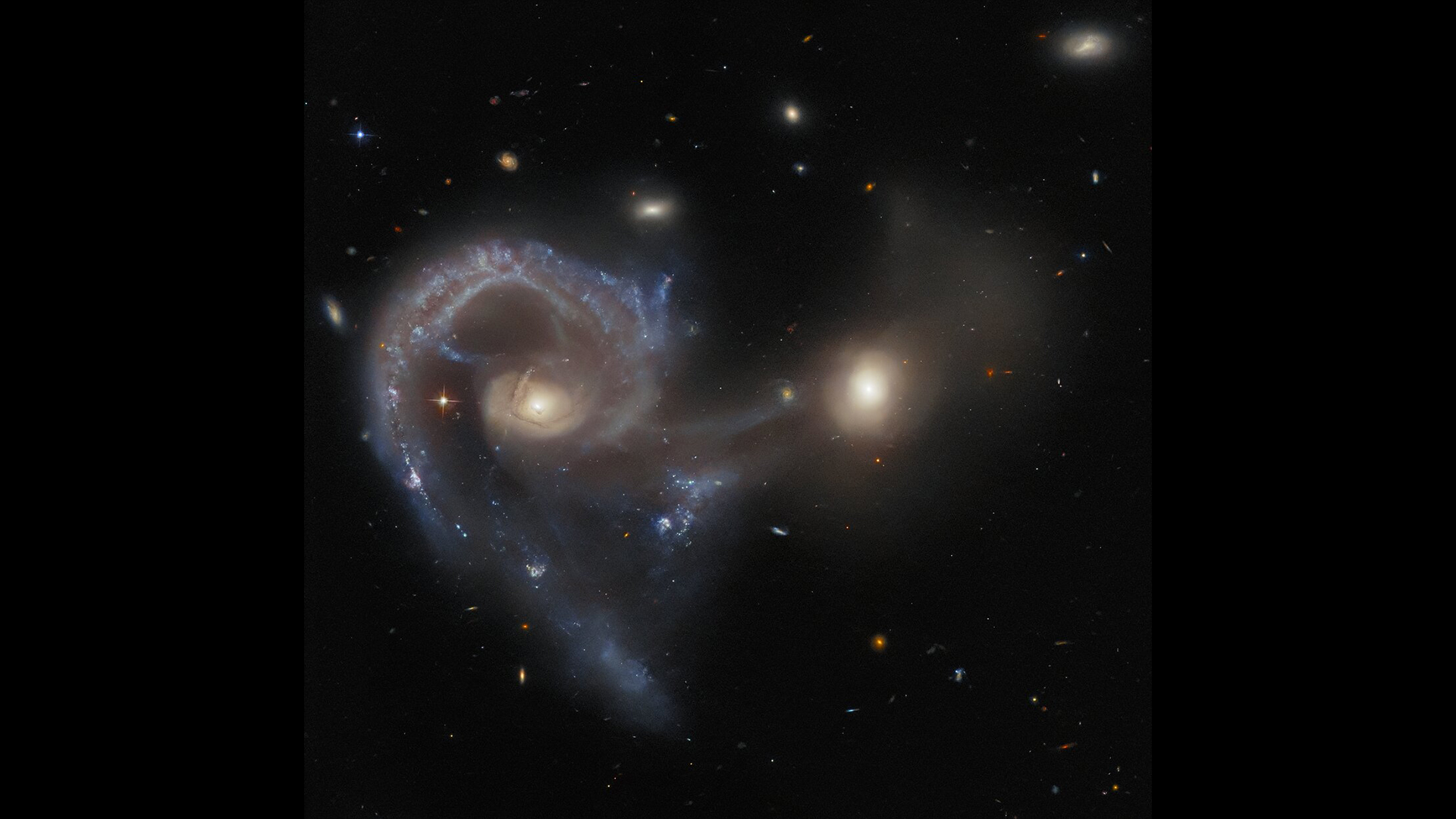Space photo of the week: Hubble spies a spectacular galaxy crash
Arp 107 hosts a special spiraling 'Seyfert' galaxy connected to a smaller galaxy by a 'bridge' of dust and gas.

What it is: Arp 107, a pair of galaxies mid-collision.
When it was taken: Sept. 18, 2023.
Where it is: 465 million light-years from Earth in the constellation Leo Minor.
Why it's so special: This image from the Hubble Space Telescope captures the cosmic collision of two very different types of galaxies.
While the large galaxy on the left shows a single spiral arm curving out from its core, with dust and gas glowing throughout, the much smaller galaxy on the right is little more than a bright core. Linking the two odd-looking galaxies is a tenuous bridge of dust and gas.
The larger galaxy is a Seyfert galaxy — a spiral galaxy that has an extremely bright, point-like active galactic nucleus powered by a supermassive black hole, according to NASA. About one in 10 galaxies are Seyfert galaxies.
Interacting and merging galaxies — including Arp 107 — were first cataloged by American astronomer Halton Arp (hence their name), who in 1966 published his Atlas of Peculiar Galaxies. In recent years Hubble has used its Advanced Camera for Surveys to make observations of these galaxies, including Arp-Madore 417-391 and the spectacular galactic triplet Arp 248.
Get the world’s most fascinating discoveries delivered straight to your inbox.
How to see it in the night sky: These galaxies are very difficult to see, even when Leo Minor is high in the sky over the Northern Hemisphere in spring. However, a similar-looking sight can be viewed in a good telescope by pointing it at M51, better known as the Whirlpool galaxy. Found between Alkaid at the end of the handle of the Big Dipper and the star Cor Caroli in the constellation Canes Venatici, the Whirlpool consists of one large spiral galaxy interacting with a dwarf galaxy right alongside it. They're 27 million light-years from the Milky Way but are a bright and easy sight for even a small telescope.

Jamie Carter is a freelance journalist and regular Live Science contributor based in Cardiff, U.K. He is the author of A Stargazing Program For Beginners and lectures on astronomy and the natural world. Jamie regularly writes for Space.com, TechRadar.com, Forbes Science, BBC Wildlife magazine and Scientific American, and many others. He edits WhenIsTheNextEclipse.com.


